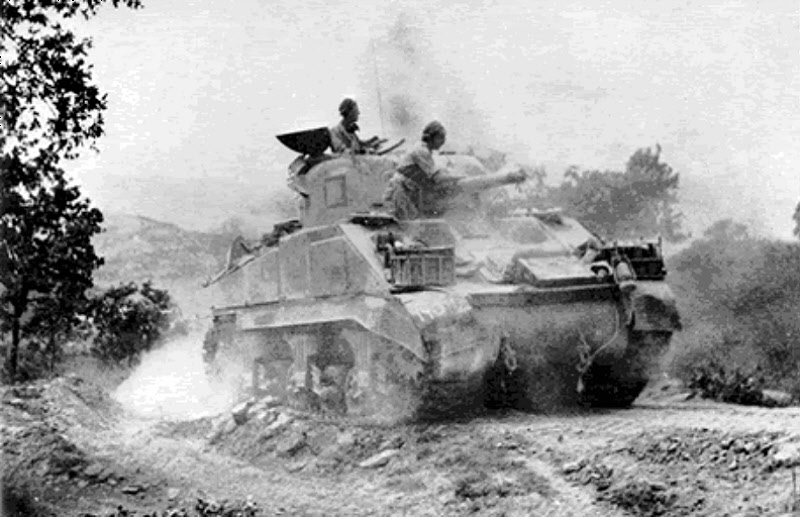
Edward M. Shepherd was born in 1922 in the Pontefract area, the son of bank manager Harold Shepherd and his wife Keziah Margaret (nee Bramley) who had married at Ferry Fryston in January 1918. The Shepherd family lived at The Gables, Station Road in 1939, but Edward was not at home then, but likely away as part of his military training. There were two siblings Barbara Shepherd, born 1926 and John B. Shepherd, born 1928.
On the 19th September 1942, Army Cadet Edward Michael Shepherd (245407) was granted an emergency commission as a 2nd Lieutenant in the Royal Armoured Corps and was later attached to the Warwickshire Yeomanry.
The Warwickshire Yeomanry played a large part in the tank battles of El Alamein. The Warwickshires were in 9 Armoured Brigade with the Wiltshires having been converted to an armoured role on the 3rd August 1941. They were part of the 2nd New Zealand Division and suffered heavy casualties on the 2nd November 1941 when they were subjected to heavy German artillery fire. The brigade, commanded by Brigadier Currie never reached their objective, losing 102 tanks out of 128. The Warwickshires lost 45 out of 52 tanks. Following their terrible sacrifice, the regiment had the honour of displaying the NZ fern leaf on their vehicles.
On the 4th May 1944, the Warwickshire Yeomanry attached to the 2nd New Zealand Division joined the campaign in Italy, landing at Taranto. Moving through close, hilly country to Cassino and after the fall of Cassino, they pursued the Germans through Rome and beyond as part of the Allied effort to breach the new so-called Gothic Line running from Pisa to Rimini in Italy’s northern Apennines, capturing the town of Arezzo on the 16th July 1944, before moving north towards Florence. Good progress was made despite determined German resistance in the hills just south of the city, which the Allies finally entered on the 4th August. From July the New Zealanders joined the British 8th Army’s march east and north towards the Italian plain. Progress was difficult – the rugged terrain of the Apennines, the numerous canals and rivers with destroyed bridges in the low-lying east, and the mud that accompanied winter’s driving rain restricted the mobility of the Division.

Above: A Sherman tank of the Warwickshire Yeomanry in Italy sometime in 1944.
Captain Edward Michael Shepherd, aged 22 years, the son of Harold and Keziah Margaret Shepherd, of Seaton Carew, West Hartlepool, Co. Durham was killed in action on the 3rd September 1944 in Italy and is buried in the Arezzo War Cemetery, south-east of Florence, Italy.
Edward Michael Shepherd lived at ‘Newlands’, The Gables, Station Rd, Ossett. Administration of his Will was given at Wakefield on the 23rd July 1945 to his father, Harold Shepherd, Bank Manager. Effects £402 18s 18d.
On the 3rd September 1943 the Allies invaded the Italian mainland, the invasion coinciding with an armistice made with the Italians who then re-entered the war on the Allied side. Progress through southern Italy was rapid despite stiff resistance, but the advance was checked for some months at the German winter defensive position known as the Gustav Line. The line eventually fell in May 1944 and as the Germans withdrew, Rome was taken by the Allies on 3 June.
The Germans made a stand in front of Arezzo early in July 1944 and there was fierce fighting before the town was taken on the 16 July by the 6th Armoured Division with the aid of the 2nd New Zealand Division. The site for this cemetery was selected in November 1944, and graves were brought into it from the surrounding area. Both the 4th and the 8th Indian Divisions were involved in the fighting in this region, and Plots VII-IX in the cemetery contain Indian graves. Arezzo War Cemetery contains 1,266 Commonwealth burials of the Second World War.
We are indebted for additional research by Andrea Hartley, Ossett Through The Ages (OTTA), who first brought this brave Ossett soldier to our attention.
References: